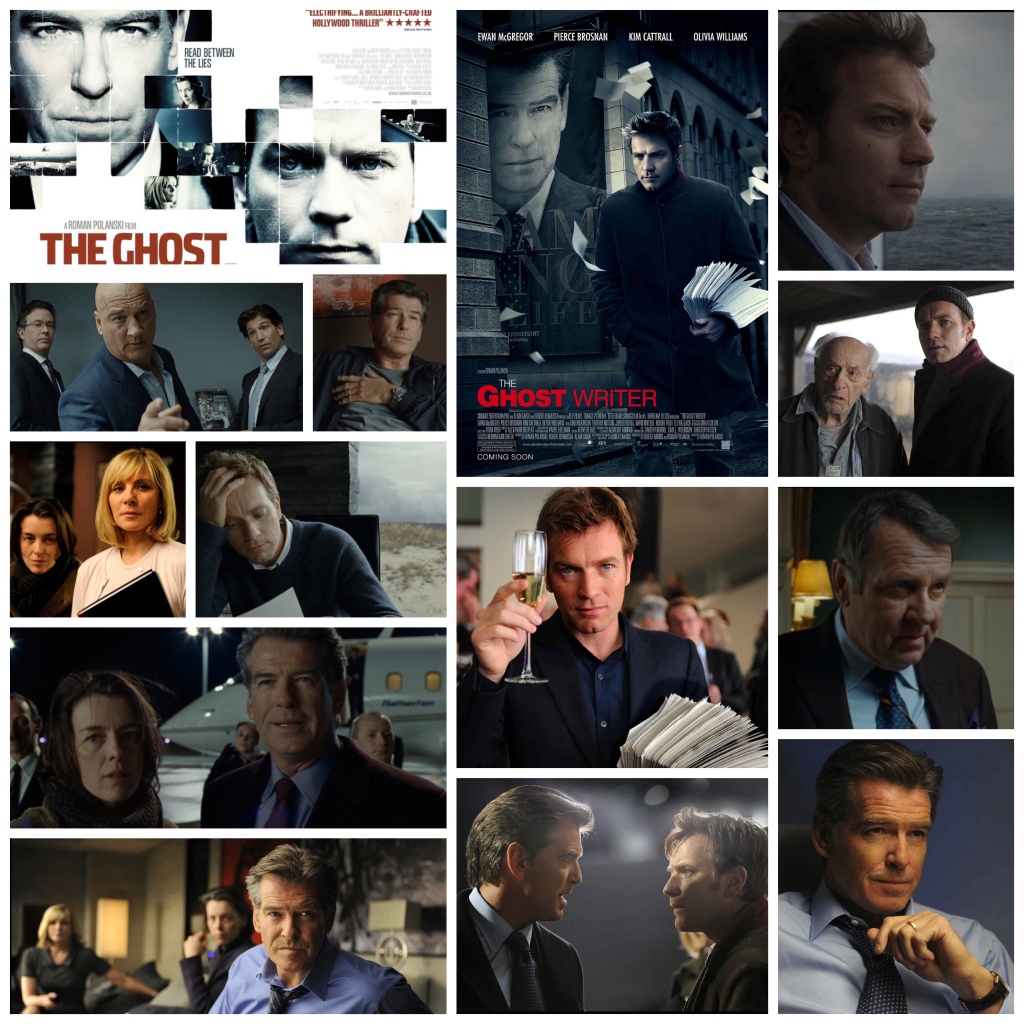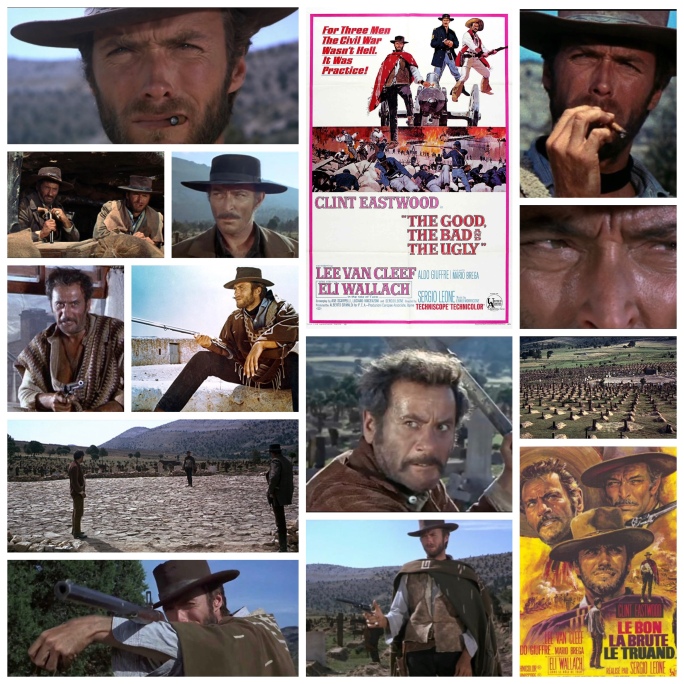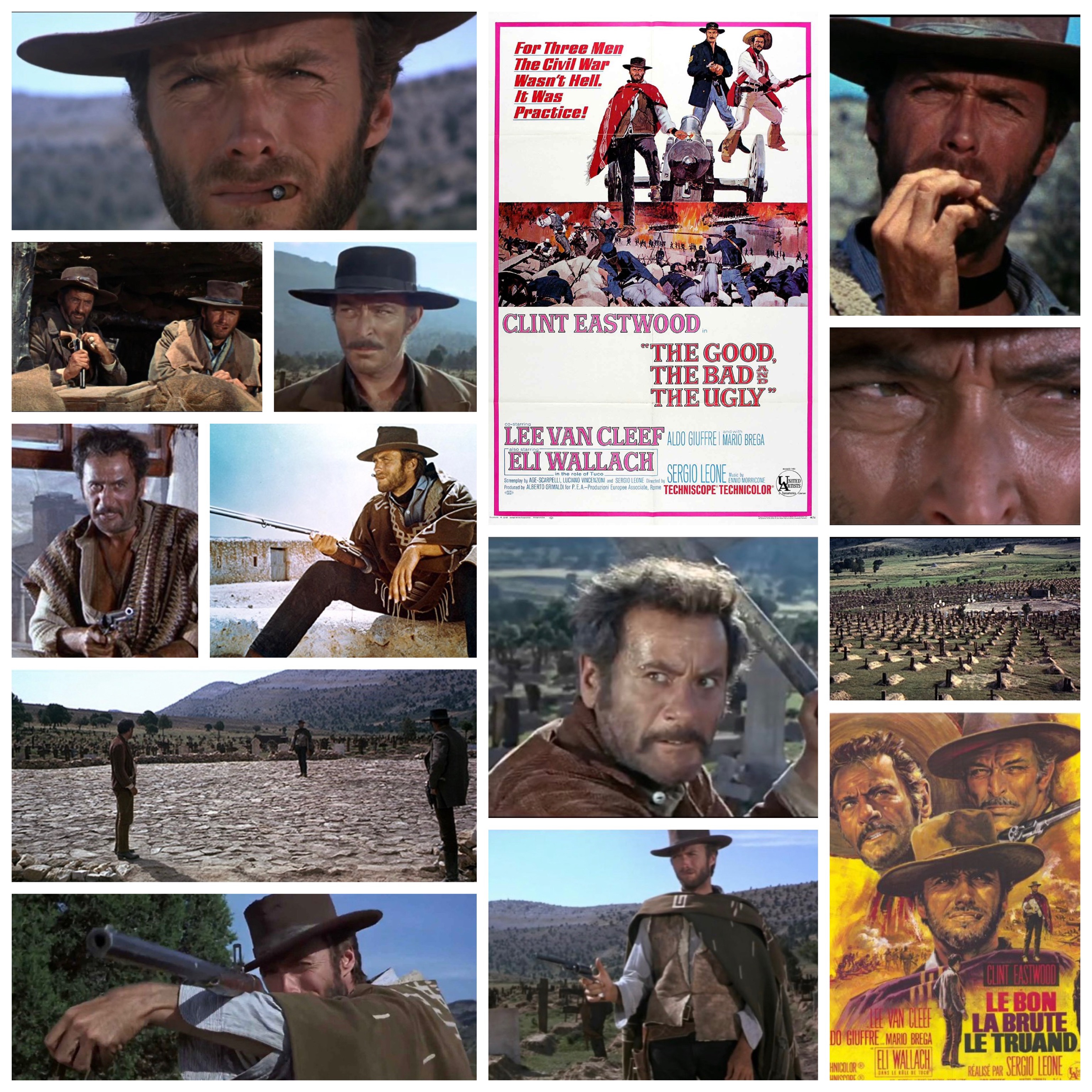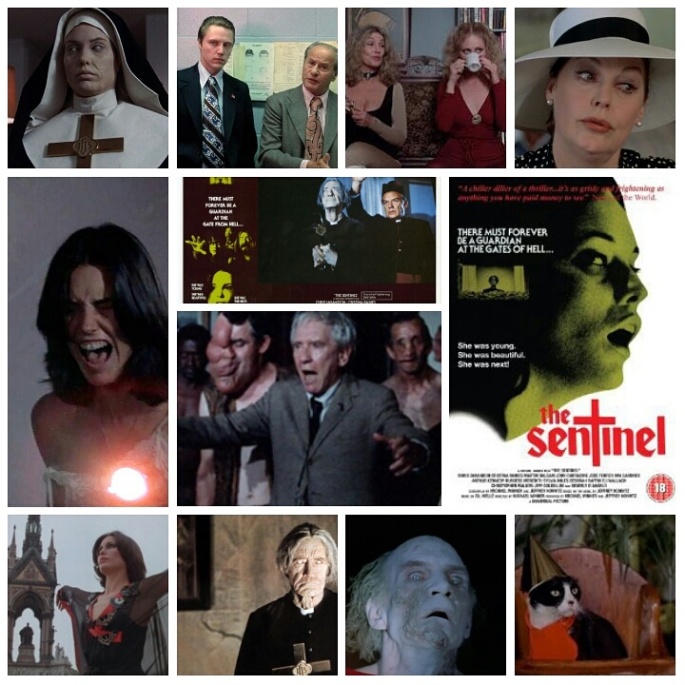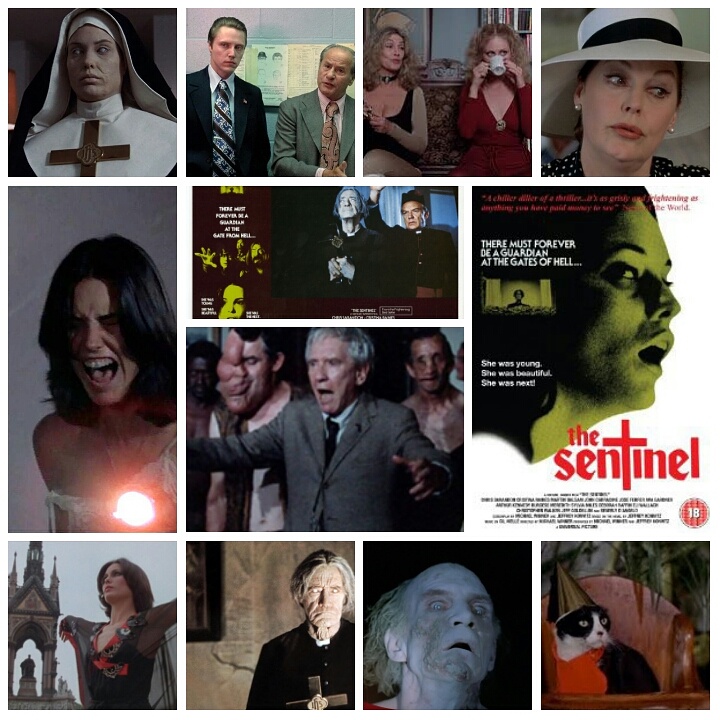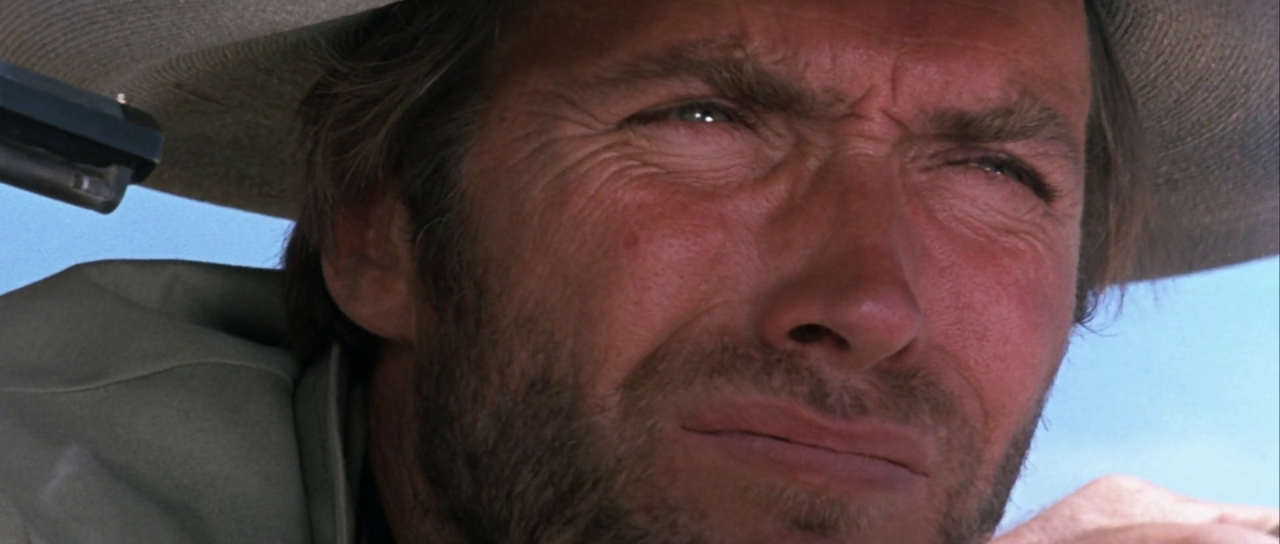
I’m not a huge fan of westerns. I could count my favorites on one hand but at the top of the list is Sergio Leone’s The Good, The Bad and The Ugly (1966), an epic story about three men’s pursuit of a chest of gold during the American Civil War. In fact, this film is one of my favorites of all-time. Instead of doing my usual in-depth examination of the film’s production, which has been covered in definitive detail in Christopher Frayling’s excellent Leone biography Something to Do with Death, I’ve decided to take a look at some of my favorite scenes.
The way Sergio Leone introduces the film’s three main characters says so much about them. Tuco a.k.a. The Ugly (Eli Wallach) is the film’s wild, uncontrollable id and the humanistic character of the three in the sense that he has all of the foibles and weaknesses that we all do. He is one of the most lethal, yet ungraceful characters in the western genre. His introduction sets up what a formidable opponent he is as he quickly dispatches three men come to kill him. Tuco crashes through a storefront window with a gun in one hand and a huge chunk of meat and bottle of wine clenched in the other, which perfectly captures the wild, untamable essence of his character. Not even a freeze frame that Leone employs at one point during this sequence slows Tuco down. He is a character of extremes.
Angel Eyes a.k.a. The Bad (Lee Van Cleef) is a cold-blooded killer and Leone captures the menace in the man’s eyes in his first close-up. With this shot Leone establishes that Angel Eyes is pure evil. He visits a man that knows the identity of someone who helped steal a box of gold. He spends a few minutes staring the poor man down, never taking his eyes off him, even while eating, which has to be pretty damn unnerving. The film’s first bit of dialogue is finally spoken in this scene, ten-and-a-half minutes in (including opening credits), which demonstrates Leone’s mastery of visual storytelling. For me, the key bit of dialogue in this scene is when Angel Eyes tells the man, “But when I’m paid, I always see the job through.” He then proceeds to kill the man and his youngest son without hesitation. If that wasn’t bad enough, Angel Eyes goes back to the man who hired him and kills him too because the other man paid him to and, of course, he always sees the job through. There’s a fantastic last shot of Angel Eyes blowing out the room’s lamp and in doing so, disappears into the darkness with a bit of ominous scoring by Ennio Morricone.
Blondie a.k.a. The Good’s (Clint Eastwood) introduction has to be one of the coolest in cinematic history. Three men capture Tuco, who is a wanted fugitive, and one of them says, “You know you got a face beautiful enough to be worth $2,000?” And then a voice off-camera says, “Yeah. But you don’t look like the one who’ll collect it.” Blondie then steps in view, coolly lights a cigar and guns down the men with brutal efficiency. Leone prolongs a shot of Blondie’s face as long as possible until we find out that he and Tuco have a deal. Blondie captures Tuco and brings him in for the reward money. He then rescues Tuco before he’s hanged to death and they repeat the process as the reward money increases. When Blondie brings Tuco in to the authorities, the fugitive lets loose a hilarious string of insults and curses directed at his captors. No one can quite say the word, “bastard” with the same kind of passion and venom as Eli Wallach does in this scene.
Later, as Blondie and Tuco split up the reward, the two men talk about the risks each takes in their endeavors. Tuco gives Blondie a warning that says a lot about his character: “Whoever double-crosses me and leaves me alive, he understands nothing about Tuco.” He laughs and in a nice bit, chews on one of Blondie’s cigar. I always wondered if that last bit was improvised by Wallach as it has a spontaneous feel to it. However, when Blondie decides to end his partnership with Tuco, he foolishly does not heed the outlaw’s warning and leaves him alive, even if it is the middle of nowhere. Blondie is a fool if he thinks that will kill Tuco, or maybe he just doesn’t care and figures that they will never meet again.
Angel Eyes witnesses Blondie and Tuco’s routine and responds to a woman who expresses relief that Tuco is being hanged by telling her, “People with ropes around their necks don’t always hang.” She asks him to explain and he replies, “Even a filthy beggar like that has got a protective angel.” Blondie is only heroic in an ironic sense. Leone underlines this notion at one point when he uses a faux angelical musical cue by Morricone to play over a shot of Blondie about to “rescue” Tuco from a hangman’s noose. Angel Eyes tells the woman, “A golden-haired angel watches over him.” Blondie is a mercenary but he does have his moments of compassion. He may be an efficient killer but unlike Angel Eyes he only kills when it is absolutely necessary or for profit.
Leone plays with our notions of good and evil with these three characters. Blondie isn’t truly good in the traditional sense but he is within the context of The Good, The Bad and The Ugly. Angel Eyes is truly bad, a pure killing machine in it only for the gold and not above repeatedly and viciously slapping a woman around in order to get information out of her. There is a glint in Van Cleef’s eye that suggests Angel Eyes enjoys making others afraid through physical intimidation. He is also very cunning and smart. He knows it would be pointless to torture Blondie when he is held captive at the Union Army Prisoner of War camp because he would never talk, as opposed to Tuco who will do or say anything to save his own skin.
Tuco is actually the film’s only sympathetic character. Sure, he is a liar and he’s crude but he also straddles the line between good and evil — at times he is one or the other — much like most people in real life. He is also quite smart as evident in the scene where he expertly assembles his own custom revolver. The others underestimate him and think that he’s stupid, but he’s quite cunning. If anything, he’s a survivor that repeatedly escapes death during the course of the film. While Angel Eyes is pure evil, Tuco is just out for himself and therein lies the crucial difference between the two characters.
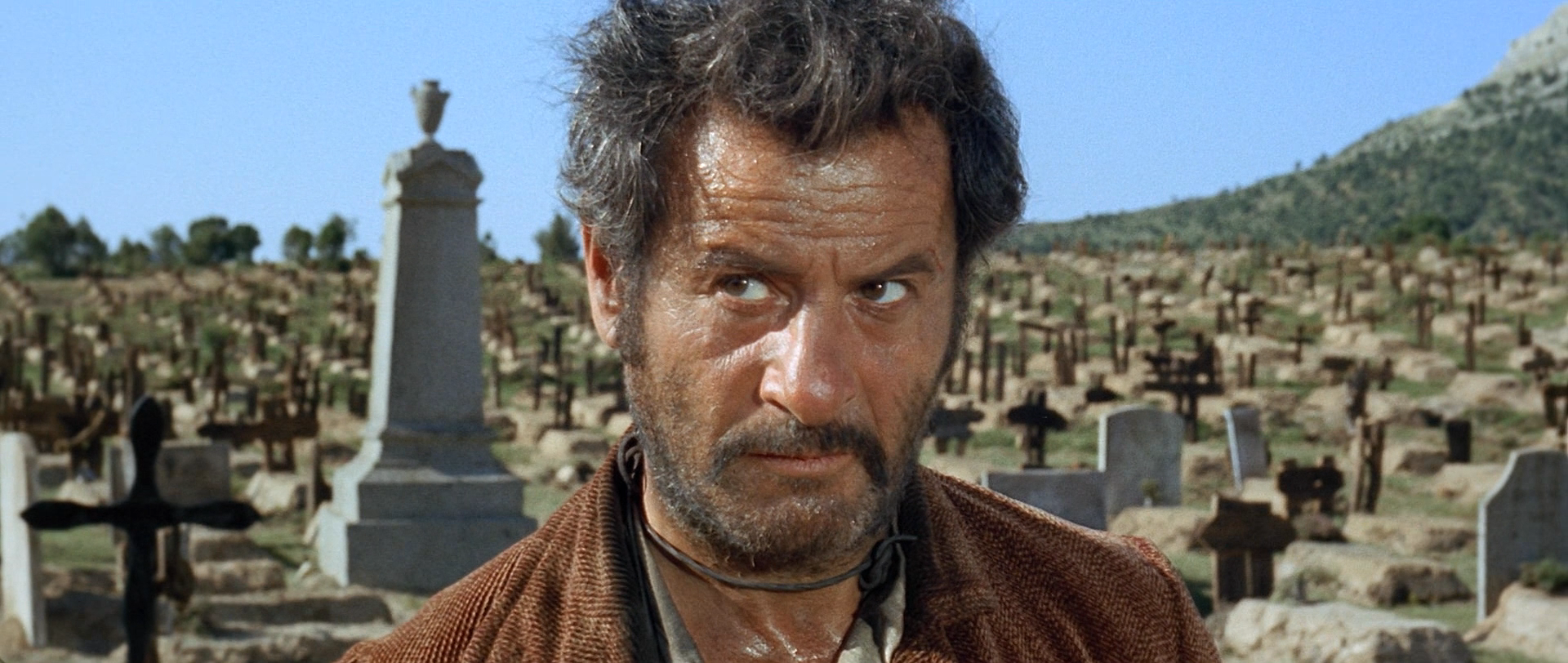
The Good, The Bad and The Ugly is a marvel of editing. For example, the scene where Tuco and his three henchmen ambush Blondie is edited in such a way that there is an incredible amount of tension created from cutting back and forth from Blondie cleaning his gun, Tuco’s men quietly approaching his room, and the army marching outside. We are left wondering if the sounds of the army will make it impossible for Blondie to hear the approaching ambush in time and if he will be able to re-assemble his gun in time. Almost no music is used during this scene, just ambient sounds and this helps ratchet up the tension even more.
A lot of people forget that The Good, The Bad and The Ugly is also a devastating critique of the American Civil War. For example, there’s a scene where Angel Eyes walks through bombed out ruins and finds all kinds of wounded Confederate soldiers. He talks to their Commanding Officer who accepts a bottle of alcohol in exchange for information. We see this again when Tuco takes Blondie to a mission to nurse him back to health after nearly killing him in the desert. They go through a room full of wounded Confederate soldiers – more casualties of this costly war. There’s also Blondie and Tuco’s time spent at a Union Army P.O.W. camp where Angel Eyes poses as an officer who tortures prisoners for information. Finally, the harshest commentary on the Civil War comes when Blondie and Tuco are captured by the Union Army and meet the Captain who is a jaded drunk. He tells them about the “stupid, useless bridge” that his men fight over with the Confederate Army two times a day because it is a strategic spot, but he dreams of seeing it destroyed. And that’s just what Blondie and Tuco do in a brilliantly choreographed sequence. At this point, the Captain has been mortally wounded but before he dies, he hears the bridge detonating and gives a smile before dying. It was Blondie’s idea to blow up the bridge for the Captain and this act is not only a nice thing to do for the man but also allows him and Tuco to cross the river as the two armies leave, no longer having anything to fight over.
Even though The Good, The Bad and The Ugly is operatic on an epic scale it is the relationships between the three main characters that makes the film so good. In particular, the relationship between Tuco and Blondie is one of the film’s strengths. They often double cross each other and have a real love-hate relationship but at the film’s end, Blondie shows mercy for Tuco’s fate. It goes without saying that it is the talent of the three lead actors that makes these characters so interesting to watch. Clint Eastwood comes from the less is more school of acting and suggests a lot from doing or saying very little. In sharp contrast is Eli Wallach’s flamboyant, over-the-top performance as Tuco. If Eastwood is all about minimalism, then Wallach lets it all hang out. Finally, Lee Van Cleef is a confident, malevolent force of nature — the pure essence of evil.
One of Eli Wallach’s finest moments in the film is when he tries to get Eastwood’s character, who is near-death, to tell him the name on the grave that contains the chest of gold. Wallach goes through a whole range of emotions as Tuco tries every trick that he knows to get the name (including using a friendly approach, begging and even crying) but no dice. It’s a wonderful scene and one that shows Wallach’s range and skill as an actor. Even more revealing is the next scene between Tuco and his brother, which provides all kinds of insight into his character. Tuco’s brother condemns his sibling’s wicked ways and past, but Tuco replies passionately, “Where we came from, if one did not want to die of poverty, one became a priest or a bandit. You chose your way, I chose mine. Mine was harder!” For all of his bravado, this is a moment where Tuco shows a vulnerable side and it adds another layer to this fascinating character.
What I’ve always found interesting is that we never find out if Tuco could beat Blondie in a gunfight. At the film’s climactic showdown, Blondie beats Angel Eyes but he tricks Tuco by not having any bullets in the outlaw’s gun. Is it because he knows that Tuco is faster on the draw? Or is he simply hedging his bets knowing that he could outdraw Angel Eyes but that would leave him little time to shoot Tuco before he shoots him. Alas, we will never know. Living up to his moniker, Blondie doesn’t kill him even though he could. He messes with him a little bit by putting him in a hangman’s noose just like Tuco did to him earlier in the film. However, he gives Tuco enough slack so that he doesn’t die and leaves him some of the gold. Blondie can’t kill Tuco because, despite everything he does in the film, he is easy to like. Again, Blondie only kills when necessary. Of course this doesn’t stop Tuco from shouting out one more curse as a parting shot and a great way to end the film.
The three men system that Leone applies to The Good, The Bad and The Ugly is one of the best plot devices ever. While it’s true that Blondie is no saint he is as close to the traditional definition of “good” as you’re going to get out of a bounty hunter. Angel Eyes is pure evil and Tuco has worked with both of them so what does that make him aside from the “ugly” moniker? He has aspects of both Angel Eyes and Blondie. It’s true that Tuco robs a store for his gun but it is done from a perspective that makes is somewhat sympathetic. Tuco is like most of us, forever unable to decide if he’s all good or all evil. He allies himself to both so that he can call on either depending on the situation. Hence, his shifting alliances with Blondie and Angel Eyes. He knows that Blondie and Angel Eyes will never become a team because Angel Eyes is only using Blondie for the name on the tombstone and Blondie is just looking for a way out.
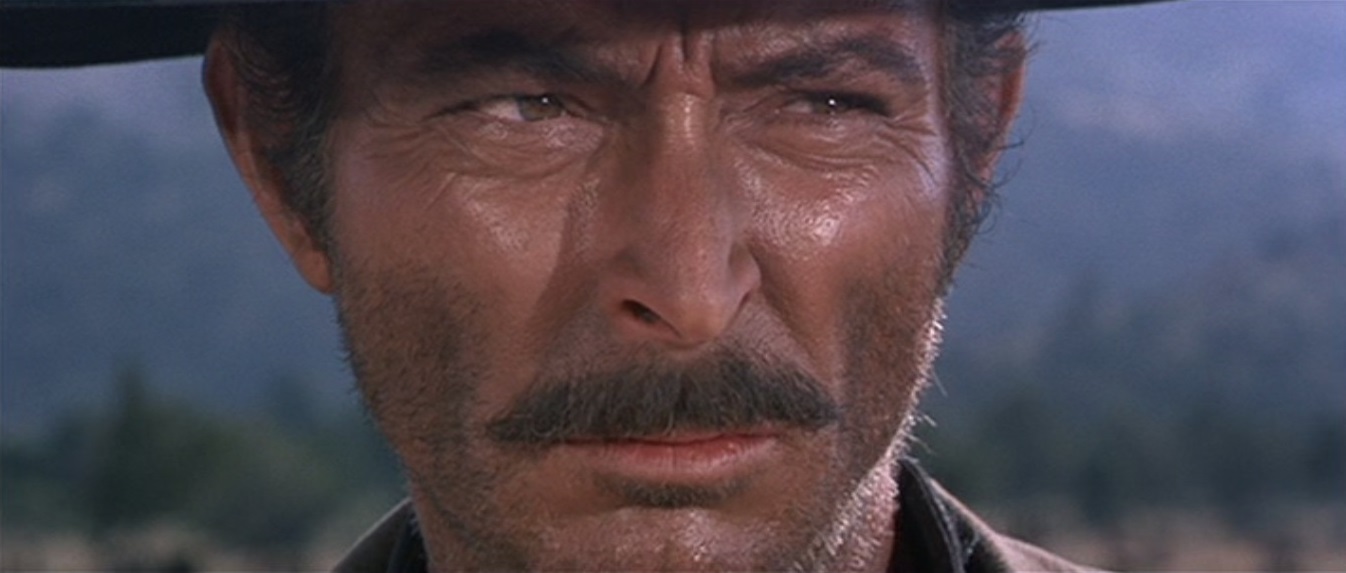
I think that one of the things I love most about this film is how Leone takes his time and lets scenes play out, using editing only when necessary, when it fits the tone and mood of a given scene, like the aforementioned climactic duel where we get all of these insane close-ups of each man’s hands, eyes, guns and so on. The tension builds and builds for what seems like forever until you’re ready to go insane and yell at the screen, “shoot already!” And then, of course, it all plays out in a few seconds. How brilliant is that? The Good, The Bad and The Ugly is one of those rare films that works on several levels, some that only reveal themselves upon subsequent viewings. While many champion Once Upon a Time in the West (1968) as Leone’s greatest achievement, I have always felt that The Good, The Bad and The Ugly was the best thing he ever made – a perfect marriage of epic scale and an intimate, character-driven story.
